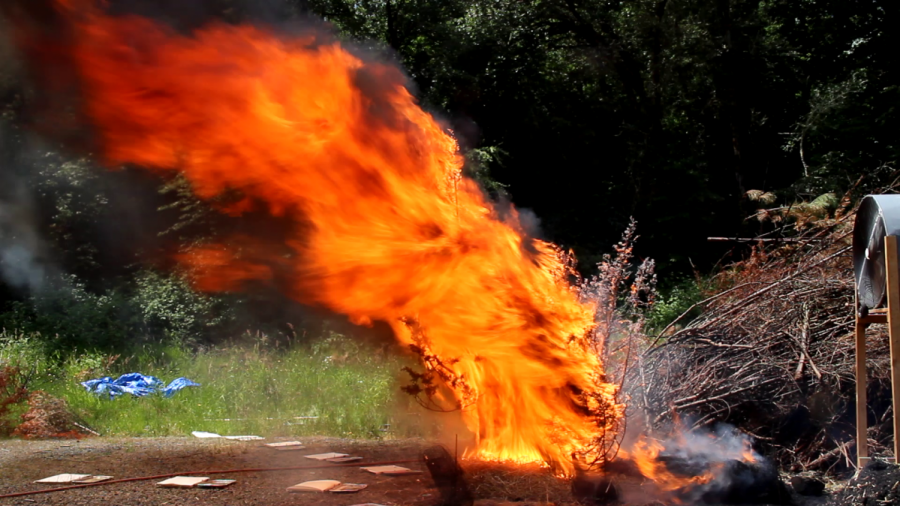Wildfire research team receives $2.1 million grant
April 8, 2019
A new Oregon State University wildfire research team has received a $2.1 million grant to study the differences in combustion of live and dried fuels, and is hoping to help further wildfire prevention causes.
Past wildfire research at OSU focused on understanding the ember generation characteristics of different species of tree. These previous studies used dried fuels while completing their experiments, but many wildfires burn in areas full of live fuels. For this reason, the upcoming research team will attempt to supplement the previous work by exploring the different characteristics of burning live fuels, which includes living trees, versus dried fuels, which includes dead or dry foliage. This new research team will be led by David Blunck, assistant professor of mechanical engineering, who was awarded the $2.1 million US Department of Defense grant in February.
“I suggest that the project is worth the funding because we expect that results can be used to improve models used by fire managers,” Blunck said.
Blunck’s team aims to discern the differences between live fuel and dried fuel fires to further their understanding of the beginning and spreading of wildfires and expand upon the findings of previous wildfire research. Previous research completed at OSU had a focus on ember generation in wildfire models, but only considered dried fuels.
Tyler Hudson, a member of a previous wildfire research team, said his work focused on ember generation with dried fuels during fires. According to Hudson, understanding embers is critical due to the nature of how fires can spread. Embers from the fires can be carried by the wind onto other materials thus spreading the fire.
Most studies of ember generation calculated the number of embers produced, but Hudson and his team measured the number of hot embers, embers capable of igniting a fire, produced by each species of tree. Hudson said their work will be able to help improve fire models due to a better understanding of how many embers should be generated for each tree in a fire model. With better fire models, predicting the movement and behavior of a wildfire will be more accurate and possibly diminish the effects of the fire.
“Wildland fires have a significant impact on the community every summer,” Hudson said.
Jacob Strittholt, second-year fermentation major and former volunteer firefighter, saw the impact of wildfires on the environment directly while firefighting. Strittholt witnessed the destructive nature of these fires in many ways, such as seeing a whole valley of homes burn down in a night, numerous deer skeletons strewn on the ground and even a burned bear running through the streets.
“They were very destructive. It looked like a nuke went off,” Strittholt said.
While Hudson and the other team members did find helpful conclusions that will aid in preventing events such as those witnessed by Strittholt, there were some gaps within their research that the new research team aims to fill.
Specifically, there is more to be understood about the differences in combustion characteristics of live and dead fuels.
By filling the gaps of the previously completed research, Blunck and his team hope to be able to further supply modelers with information to aid in understanding wildfire behavior and prevention.















































































































